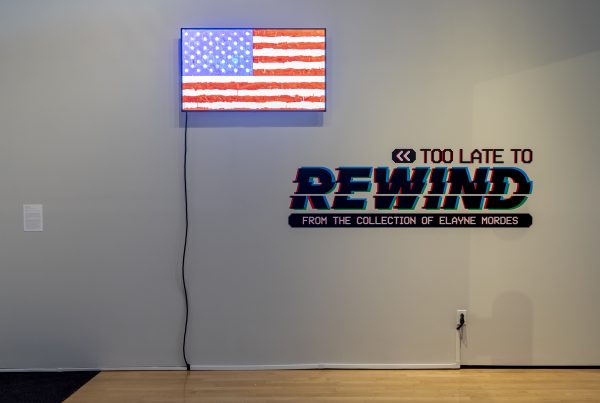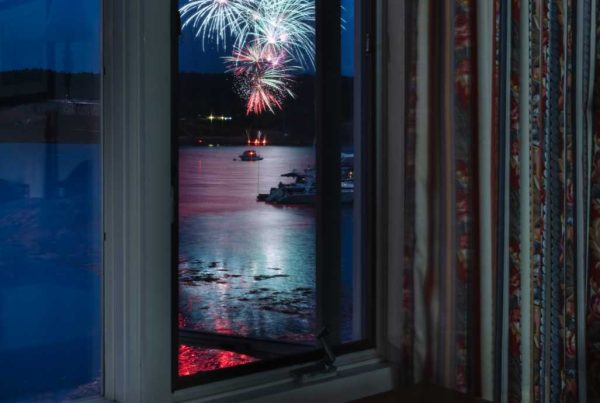Contrary to the perception of many, I found 2015 to be an awfully weak year for Hollywood and studio movies, from the visually lovely but otherwise weak tea of “Carol,” “The Danish Girl” and “Brooklyn” to the entertaining but empty-caloric “Martian” to the virtuosic but content-deprived “Mad Max.” But delving deep into 2015’s most formally daring and thought-provoking movies still uncovered plenty of boldness and provocation, if you were willing to search around the edges.

10. About Elly
Like Michelangelo Antonioni’s classic “L’Avventura,” The narrative of this Iranian drama pivots on a twist. The title character vanishes 30 minutes into the movie, on the shore of the Caspian Sea, where three middle-class Iranian couples, their children, and two eligible singles have gathered for a holiday. But unlike “L’Avventura,” director Ashgar Farhadi is not interested in chronicling the callousness of the idle and the entitled. The central enigma of “About Elly” is never discarded; it is exhaustibly considered from every possible angle, shuffled and reshuffled like a Rubik’s Cube of possibilities, few of them landing on colors that line up. Old cultural norms of patriarchy and misogyny creep out of the movie’s woodwork as expediency and responsibility vie for ethical dominance, and where seemingly incidental lies provide crucial clues to its mystery. It’s a brilliant and assured work of art-house nirvana.

9. Sicario
Denis Villeneuve’s meditation on the U.S.-Mexican drug war is deeply unsettling in a way that few films are. A grisly crime thriller where most of the violence occurs just off-camera, it’s driven more by atmosphere than story, and its tone is implacable and hypnotic. It’s a two-hour dreamfilm — nay, a nightmare film — where logic is irrelevant, where everyone but the main character is sociopathic, where death’s scythe lingers over every encounter. All of it is shot through with the orchestral poetry of Scorsese at his “Taxi Driver” peak, painting a vision of a covert apocalypse submerged in moral decay. Villeneuve shows familiar terrain like it’s an alien land — vast, arid, usually depopulated, a spatial morass of off-the-grid lawlessness. And Emily Blunt’s breakthrough performance, as an idealistic FBI agent caught in the crosshairs, is a master class in often-wordless engagement.

8. Spotlight
In this deeply engrossing, fact-based feature about a quartet of Boston Globe investigative reporters’ efforts to uncover child abuse among Massachusetts priests, Michael Keaton, Mark Ruffalo, Rachel McAdams and Brian d’Arcy James inhabit the intrepid journos with such conviction you can practically feel the newsprint on their hands and shoe leather on the feet. With his subtle directorial choices, Thomas McCarthy seems to discover the movie’s wider meaning along with his protagonists. The story’s tentacles extend to numerous once-trusted, now-suspect corners of American life, from the corrupt Catholic Church to a venal legal system to a supine media. It’s ultimately an indispensable reminder about the purpose of the fourth estate, and it earns a place on the upper tier of great journalism dramas.

7. Li’l Quinquin
This three-and-a-half-hour French epic directed by Bruno Dumont is a macabre murder mystery in a quaint seaside town whose central character, Quinquin (Alane Delhaye), is a resourceful, defiant, troublemaking child with intense eyes, the sneer of a pint-sized James Cagney and, most surprisingly, an adult’s capacity for empathy. He’s a frequent thorn in the side of Commandant Van der Weyden (Bernard Pruvost), the shambolic and twitchy sheriff assigned to the bizarre case, which begins with an airlifted cow stuffed with human remains. The film’s milieu — perverse crimes rattle a small town — links it to hilarious whodunits like “Twin Peaks” and the black comedies of the Coen Brothers, and while there is much comedy in the characters’ interactions, Dumont’s observance of this town also reveals a festering culture of xenophobia directed at its Arab minority. The humor of “Li’l Quinquin” is persistent, but so is the dread that slowly gathers around the movie’s fringes, disarming us.

6. Tangerine
Reportedly shot on an iPhone 5, for a mere $100,000, on the sun-bleached streets of Santa Monica, Sean Baker’s “Tangerine” is a loud, caterwauling, unflinchingly honest triumph of outsider art. This roiling movie is populated entirely by characters living on life’s margins, the sort cautiously ignored by Hollywood — most prominently a pair of transgender prostitutes. Baker’s cinematography has the rough-and-tumble rawness of a ‘90s rap video, often aided but a spastic soundtrack of crunching EDM. Against this bedraggled backdrop, laws and hearts are broken, insecurities are exposed, unconventional alliances are struck and families are possibly torn asunder. Yet, as Baker found out in the process of telling his nonjudgmental story, trans prostitutes use humor as a coping mechanism to transcend hardship, so this is the prevailing emotion of this scorching docu-comedy — that rare American movie that is like nothing else before it.

5. Chi-Raq
An offbeat remake of Aristophanes’ prescient “Lysistrata,” Spike Lee’s hilarious and pointed collage about gun violence in Chicago (and America) is a picture of pure, unfettered agitprop. A fascinating, messy paradox of a movie, “Chi-Raq” is a timeless parable wrenched from recent history—a fanciful feature film that still carries the urgency of a ripped-from-the-headlines documentary. This madcap satire bursts with uncomfortable truths—many of them delivered in the film’s stirring centerpiece, in which John Cusack, brilliantly and incongruously cast as Chicago’s most zealous reverend, sermonizes on the issues that keep the city’s African-Americans relegated to second-class citizenship: mass unemployment, lack of upward mobility, politicians bought and owned by the NRA. As a call to action, there may be no 2015 film more important than this one.

4. Clouds of Sils Maria
This metaphysical English-language drama by the French auteur Olivier Assayas says everything “Birdman” did about the struggles of artistic creation, the pitfalls of celebrity and the relationship between the two—but in a form that is both haunting and self-reflexive, with so many relationships mirrored, and so many lines blurred between actors and roles, both in this film itself and the play-within-the-film, that it becomes a profound meditation on the extent to which art consumes, and then mimics, life. The interplay between Juliette Binoche, as an actress revisiting a traumatic play from her youth but from a different angle; Kristen Stewart, as her dedicated, complicated assistant; and Chloe Grace Moretz as a troubled starlet hoping to rebrand her image, lend indelible humanity to this uniquely cerebral feature.

3. Anomalisa
Charlie Kaufman’s stop-motion animation fable continues this groundbreaking writer’s career-long exploration into the science fiction of the everyday. Centering on a world of uniform AI drones and the one—and, for a brief night, two— humanoid figures who have become self-aware, “Anomalisa” is an extraordinary study of angst, loneliness and conformity coalescing in a vision that is not far from Orwell’s dystopias. Like any potent science-fiction film, this frightening comedy’s most pressing messages reflect the current atmosphere of American malaise more than any future concerns—and leave it up to an animated film to present the most realistic sex scene in recent memory. You’ll never hear Cyndi Lauper’s “Girls Just Want to Have Fun” the same way again. (Note: “Anomalisa” opens Jan. 15 in South Florida).

2. The Look of Silence
Joshua Oppenheimer’s companion piece to his extraordinary 2012 documentary “An Act of Killing” continues that film’s investigation of the Indonesian military genocide of 1965-66, this time with from the point of view of a victim’s brother, who boldly confronts his kin’s murderers under the auspices of a free eye exam. The result is just as shattering as its predecessor. It’s an expose of collective brainwashing and mass delusion, as a group of killers—and the shameful nation they represent, which still treats them as heroes—still refuse, after 50 years, to offer any regret or even culpability for their actions. A vital argument for re-opening old wounds, “The Look of Silence” is equal parts personal history and fearless journalism, peppered with unexpected moments of grace and humor. Quite simply, it’s the reason movies exist.

1. Timbuktu
The jihadist group Ansar Dine’s occupation of the titular Malian city inspired the devastating indictment of Islamic fundamentalism from Mauritania’s Abderrahmane Sissako. Wearing flak jackets inscribed with the words “Police Islamique,” the terrorists patrol the streets for indications of secular pleasures — music, sports, women’s uncovered hands and ankles — and screech sharia law through tacky bullhorns. Even with their guns, these true believers are ridiculous crusaders: raving tin-pot tyrants who are not taken seriously by most of the locals, at least until the lashings and stonings commence. Innocent protagonists will soon confront the harsh reality of sharia justice, but Sissako casts his thematic net wide, exploring the impact of the occupation on the entire village, from forced marriages and the invasions of homes, mosques and soccer fields to the occupiers’ pathetic attempts to sway public opinion in their favor. Timely, dangerous and courageous, and tempered by stone-faced absurdism, “Timbuktu” views the Ansar Dine occupation for what it was: an attempt to turn back time in the guise of religious piety.
Honorable mentions: “Room,” “Gett: The Trial of Viviane Amsalem,” “It Follows,” “Experimenter,” “Mistress America”







